The good fortune of an inside platform is outlined by way of what number of groups undertake it. Which means that a
platform crew’s good fortune hangs on their talent to collaborate with different groups, and in particular to get
code adjustments into the ones groups’ codebases.
On this article we’ll have a look at the other
collaboration levels that platform groups generally tend to perform in when running with different groups, and
discover what groups must do to verify good fortune in every of those levels.
In particular, the 3 platform collaboration levels we’re going to be having a look at are
platform migration, platform intake, and platform
evolution. I’ll describe what’s other in every of those levels,
speak about some working fashions that platform groups and product supply groups
(the platform’s customers)
can undertake when running in combination in every segment, and have a look at what cross-team collaboration patterns paintings
absolute best in every segment.
When bearing in mind how device groups collaborate, my go-to useful resource is the glorious
Team Topologies e book. In bankruptcy 7 the authors
outline 3 Workforce Interplay Modes: collaboration, X-as-a-service, and facilitating.
There may be, unsurprisingly, some overlap between the fashions I can provide on this article
and the ones 3 Workforce Topology modes, and I will level the ones out alongside the way in which. I will additionally
refer again to one of the most normal knowledge from Workforce Topologies within the conclusion to this
article – it actually is a particularly precious useful resource when excited about how groups paintings
in combination.
Platform Supply groups vs. Product Supply groups
Earlier than we dive in, let’s get transparent on what distinguishes a platform crew
from different varieties of engineering crew. On this dialogue I can regularly check with
product supply groups and platform supply groups.
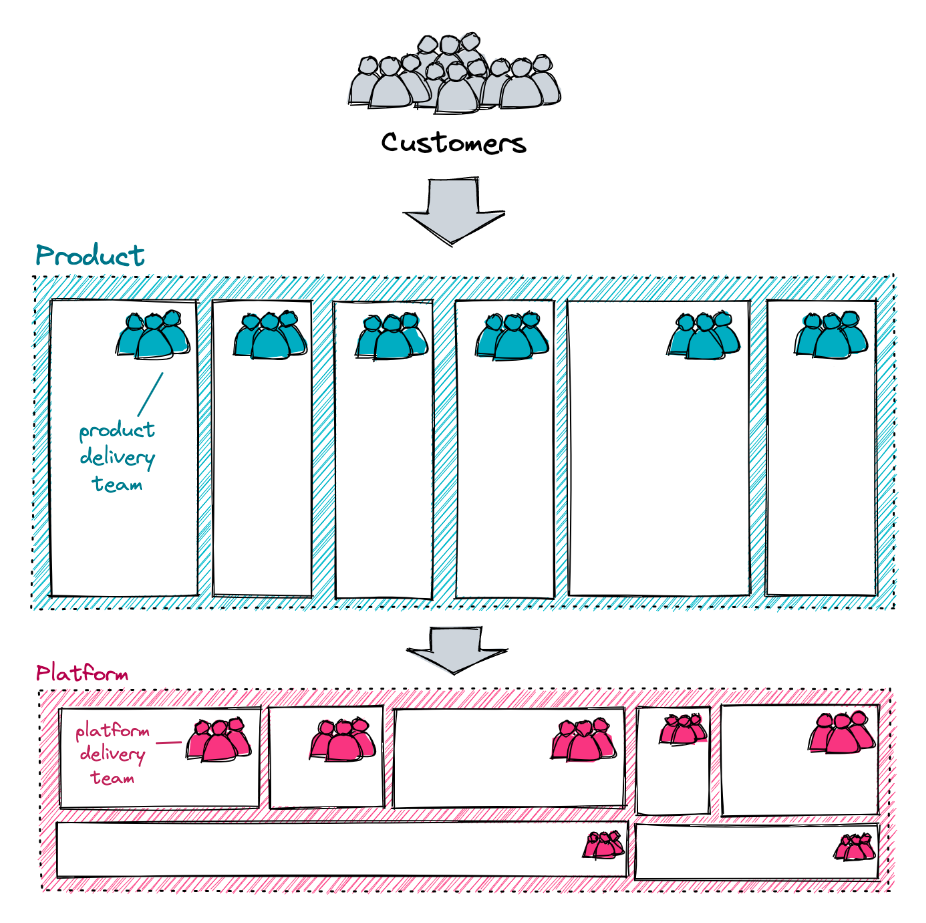
A product supply crew builds options for a corporation’s shoppers – the
finish customers of the product they are development are the corporate’s shoppers.
I have additionally noticed these kinds of engineering crew known as a “function
crew”, a “product crew” or a “vertical crew”. On this article I will use
“product crew” as a shorthand for product supply crew.
By contrast, a platform supply crew builds merchandise for different groups within the
corporate – the top customers of the platform crew’s product are different groups
throughout the corporate. I will be the usage of “platform crew” as a short-hand for “platform supply crew”.
Within the language of Workforce Topologies, a product supply crew would usually be characterised
as a Move Aligned crew. Whilst the Workforce Topologies authors at the start outlined
Platform Workforce as a definite topology, they have got due to this fact come to peer “platform”
as a broader thought, slightly than a definite means of running – one thing I very a lot consider. In
my revel in on the subject of Workforce Topologies terminology a excellent platform has a tendency to perform as both
a Move Aligned crew – with their platform being their price circulate – or as an Enabling crew, serving to
different groups to prevail with their platform. If truth be told, in lots of the cross-team collaboration patterns we’re going to
be having a look at on this article the platform crew is performing in that Enabling mode.
“Platform” > Inside Developer Platform
There may be a large number of buzz these days round Platform Engineering, basically
inquisitive about Inside Developer Platforms (IDPs). I wish to make it transparent that
the dialogue of “platforms” this is considerably broader; it encompasses different inside merchandise
equivalent to a knowledge platform, a front-end design gadget, or an experimentation platform.
If truth be told, whilst we will be able to be basically fascinated about technical platforms, a large number of the tips
offered right here additionally observe to inside merchandise that supply shared industry features – a cash motion
provider at a fintech corporate, or a product catalog provider at an e-comm
corporate. The unifying feature is that platforms are inside merchandise utilized by different groups inside of a company.
Thus, platform groups are development merchandise whose shoppers are different groups inside of their corporate.
platform groups are development merchandise whose shoppers are different groups inside of their corporate
Stages of platform adoption
Good enough, again to the several types of cross-team paintings. We are going to glance
at 3 eventualities that require collaboration between platform groups
and product supply groups: platform migrations, platform intake, and
platform evolution.
As we have a look at those 3 levels, you must observe two explicit
traits: which crew is using the paintings, and which crew owns
the codebase the place the paintings will occur. The solutions to these two
questions a great deal impact which collaboration patterns make sense in every
state of affairs.
Platform Migrations
We will get started by way of having a look at platform migrations. Migrations contain
adjustments to product groups’ codebases so as to transfer over to a couple new
platform capacity.
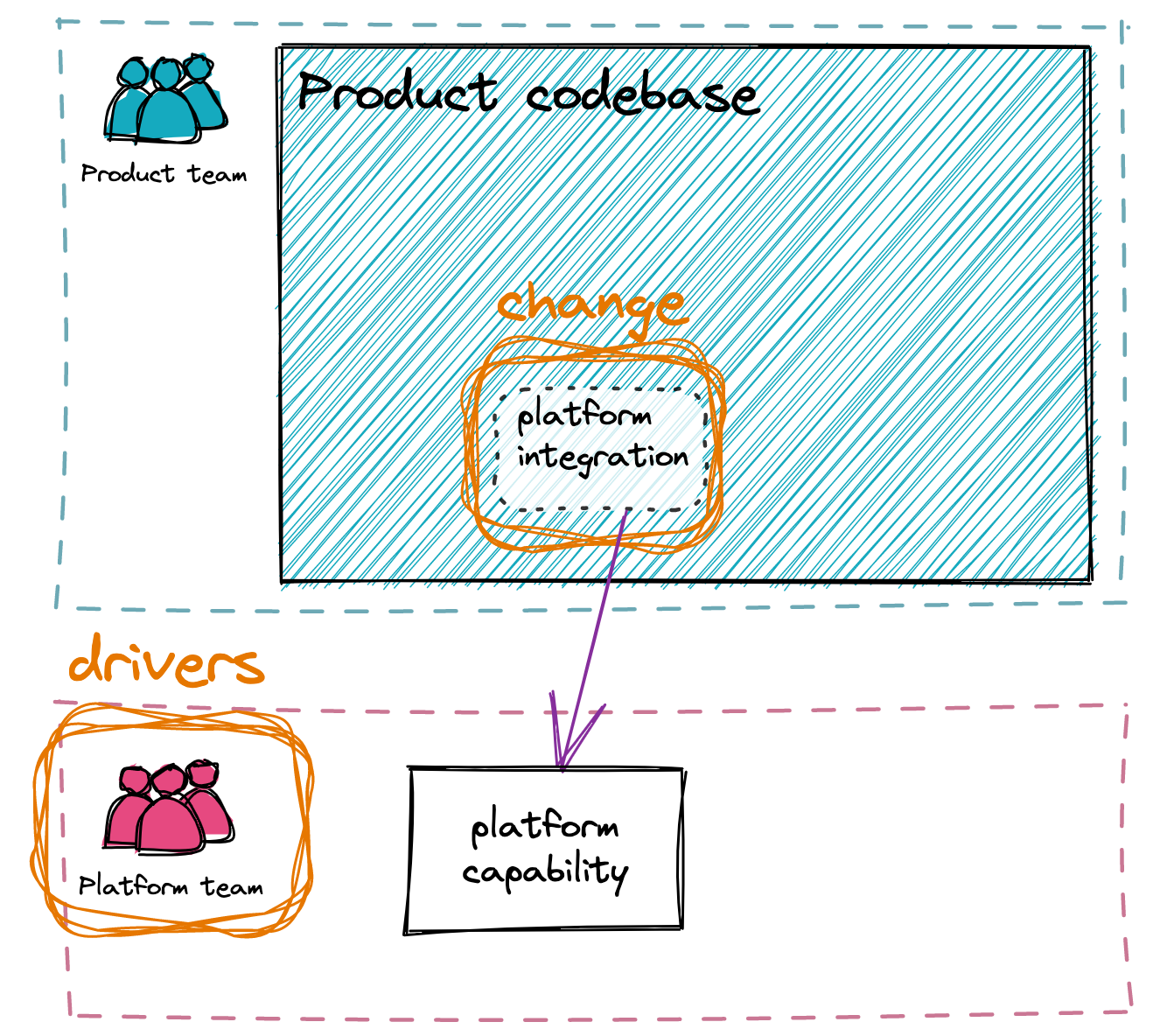
We see that during those scenarios it is a platform crew that is using the
adjustments, however the possession of the codebase that wishes converting is sits with a distinct crew – a product crew.
Therefore the desire for cross-team collaboration.
Examples of migration paintings
What varieties of adjustments are we speaking about? One rather easy
migration could be a model upgrade- upgrading a shared part
library, or upgrading a provider’s underlying language runtime.
A commonplace, higher migration could be changing direct integration of
a third birthday celebration gadget with some inside wrapper – for instance, transferring
logging, analytics, or observability instrumentation over to the usage of a
shared inside library maintained by way of a platform crew, or changing
direct integration with a fee processor with integration by way of an
inside gateway provider of a few type.
Every other form of migration may well be changing an present integration right into a deprecated
inside provider with an integration into it is alternative – most likely transferring from an outdated Consumer
provider to a brand new Account Profile provider, or migrating utilization of a
credit-puller and credit-reporting provider to a brand new consolidated
credit-agency-gateway provider.
A last instance could be an infrastructure-level re-platforming –
dockerizing a provider owned by way of a product crew, introducing a provider
mesh, switching a provider’s database from MySQL to Postgres, that kind
of factor.
Word that with platform migrations the product crew is regularly now not particularly motivated
to make those adjustments. Now and again they’re, if the brand new platform goes to offer some
in particular thrilling new features, however regularly they’re being requested to make this shift
as a part of a broader architectural initiative with out in reality getting an enormous quantity of price
themselves.
Collaboration Patterns
Let’s have a look at what cross-team
collaboration patterns would paintings for platform migration
paintings.
Farm out the paintings
The platform crew may File a Ticket within the
product groups’ backlogs, asking them
to make the specified adjustments themselves.
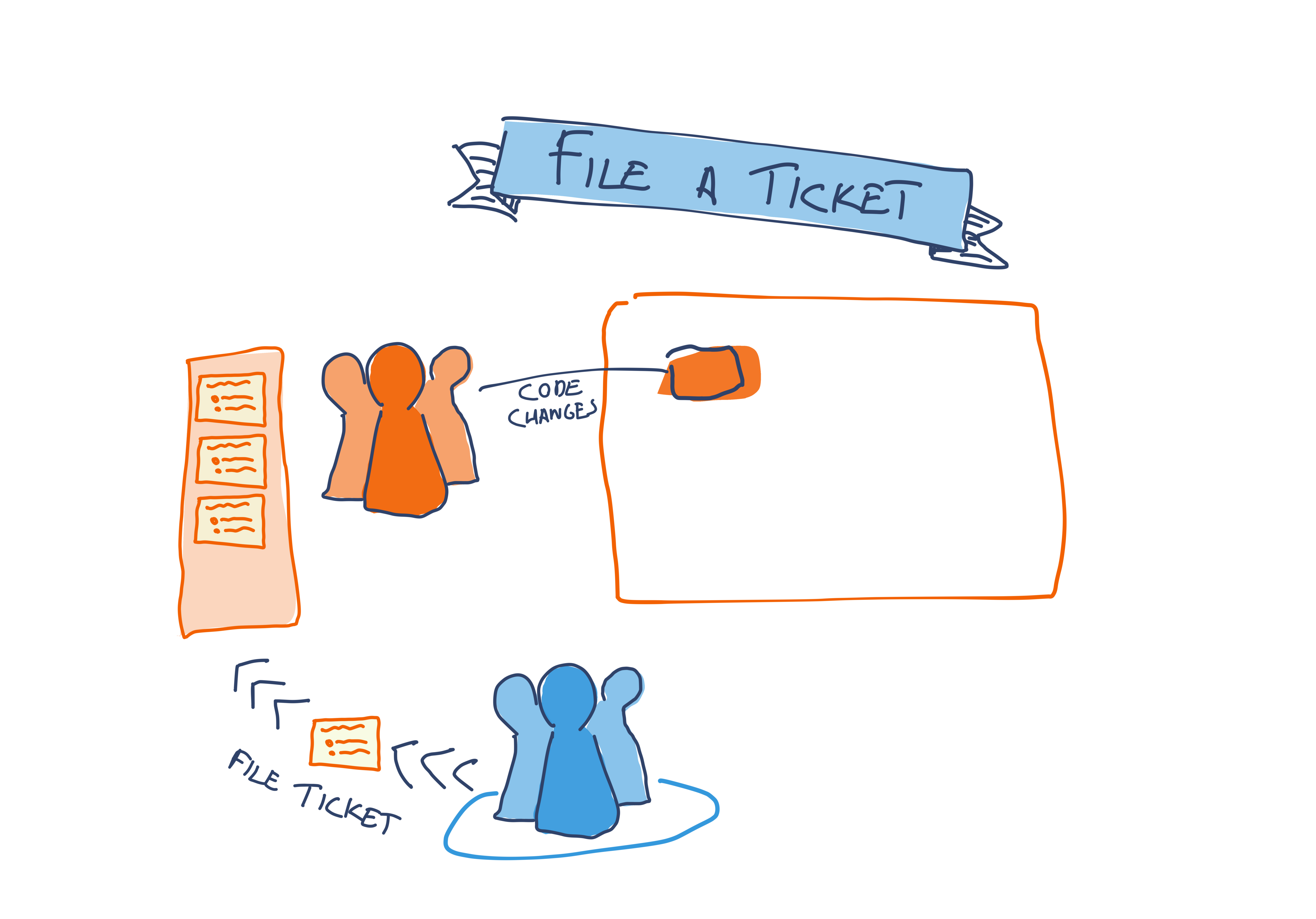
This way has some benefits. It’s scalable – the
implementation paintings can also be farmed out to the entire product groups whose
codebases want paintings. It’s additionally trackable and simple to regulate – regularly
the price tag submitting can also be completed by way of a program supervisor or different venture
control sort.
On the other hand, there also are some drawbacks. It’s actually sluggish –
there shall be lengthy lead occasions prior to some product groups get round
to even beginning the paintings. Additionally, it calls for prioritization
arm-wrestling – the groups being requested to try this paintings regularly don’t
obtain tangible advantages, so it’s herbal that
they’re incorporated to de-prioritize this paintings over different duties that
are extra pressing or impactful.
Platform crew does the paintings
The platform crew may choose to make adjustments to the product crew’s
codebases themselves, the usage of 3 equivalent however distinct patterns –
Tour of Duty, Trusted Outsider, or Internal Open Source.
With Tour of Duty, an engineer from the
platform crew would “embed” with the product crew and do the paintings
from there.
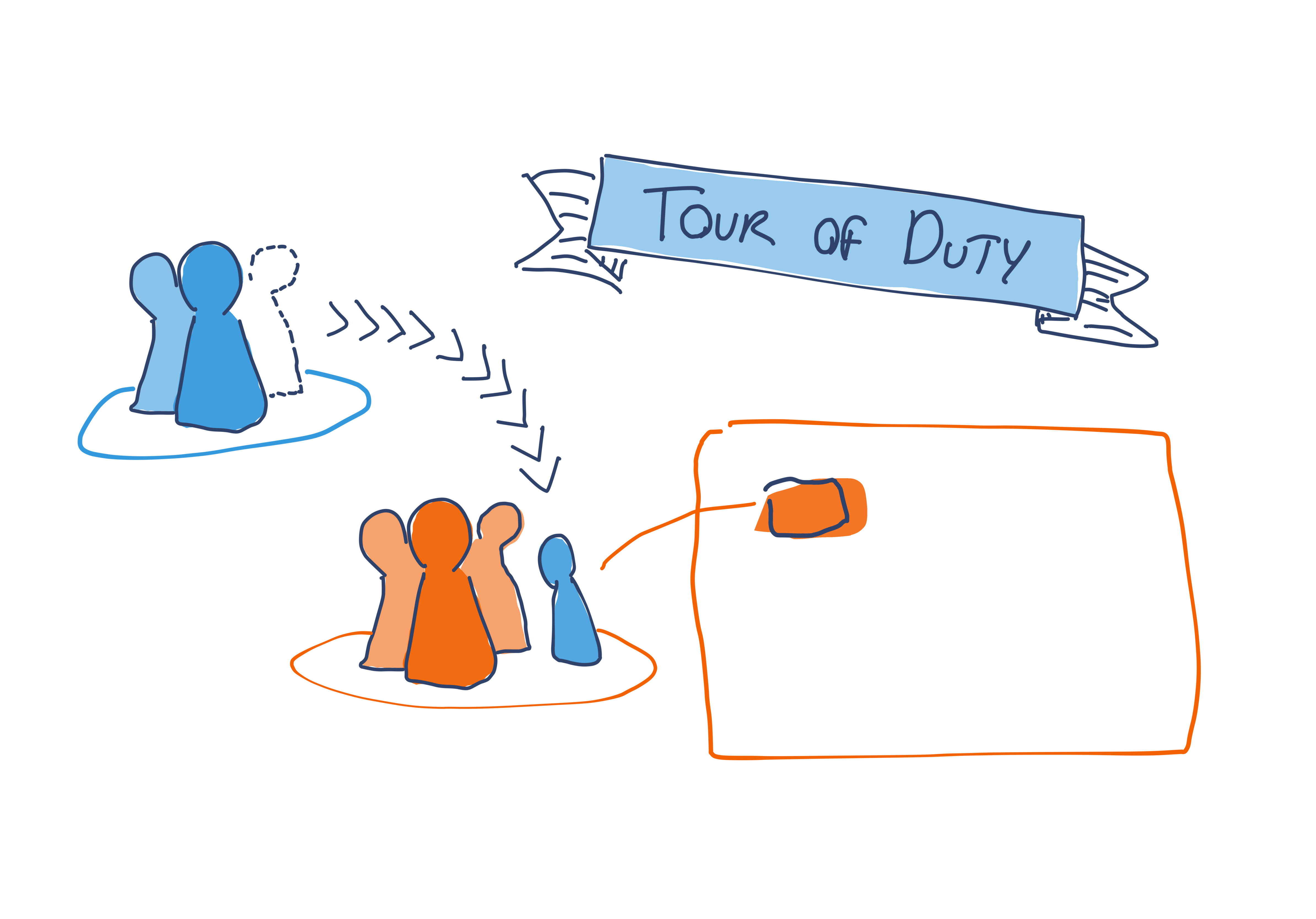
With Trusted Outsider and Internal Open Source the product crew would settle for pull
requests to their codebase from an engineer within the platform crew.
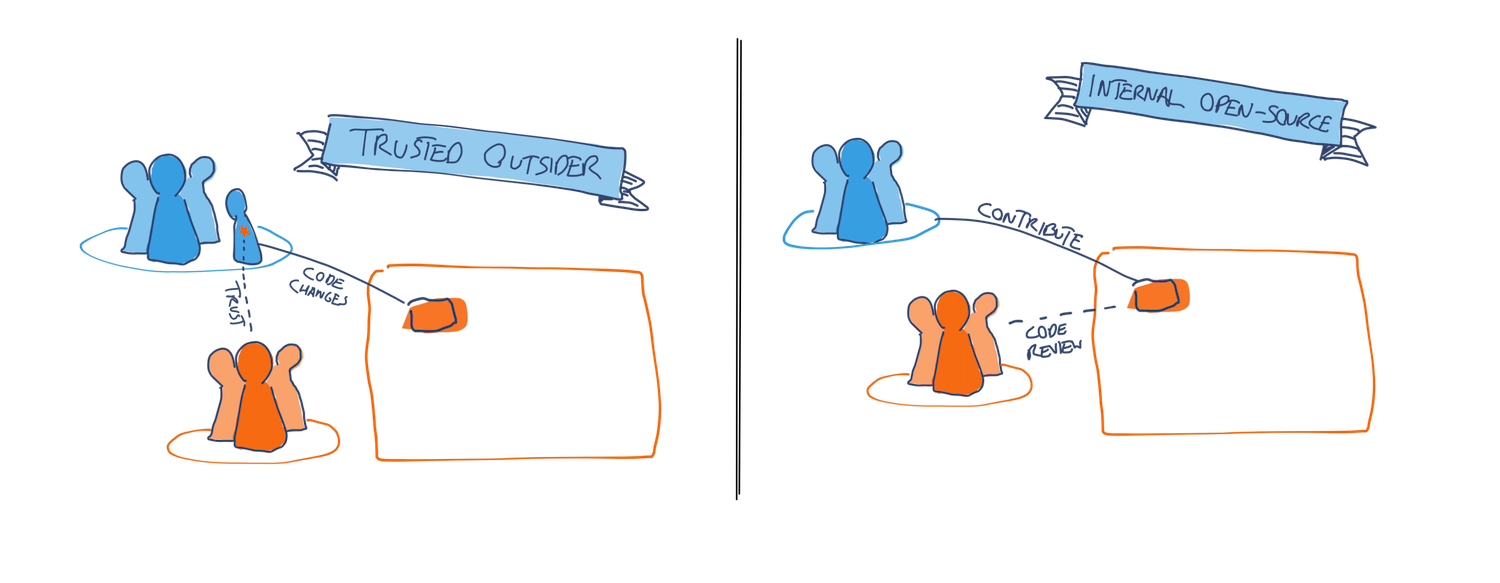
The dignity between those closing two patterns lies in whether or not
any engineer can make a contribution to the product
crew’s codebase, or just a small set of depended on exterior
participants. It is uncommon to peer product supply groups make the
funding required to make stronger the entire inside open-source
way, however now not bizarre for contributions to be approved by way of a
handful of depended on platform engineers.
Simply as with taking the file-a-ticket trail, having the platform
crew do the paintings comes with some professionals and cons.
At the plus aspect, this way regularly reduces the lead time to
get adjustments made, since the crew that wishes the paintings to be completed
(the platform crew) may be the only doing the paintings. Aligned
incentives imply that the platform crew is a lot more prone to
prioritize their paintings than the product crew which owns the codebase
would.
At the adverse aspect, having the platform crew do the migration
paintings themselves handiest works if the product crew can make stronger
it. They both want to be pleased with a platform engineer
becoming a member of their crew for some time, or they want to have already spent
sufficient time with a platform engineer that they accept as true with them to make
adjustments to their codebase independently, or they want to have made
the numerous funding required to make stronger an inside
open-source way.
Every other adverse is this home made technique isn’t
scalable. There’ll at all times be much less engineering capability at the
platform crew in comparison to the product supply groups, and now not
delegating engineering determine to the product groups leaves all that
capability at the desk.
Actually, it is a bit extra difficult
In fact, what regularly occurs is a mix of those
approaches. A platform crew tasked with a migration may have
a program supervisor dossier tickets with 15 product supply groups after which
spend some time period cajoling them to do the paintings.
After some time, some groups will
have completed the paintings themselves however there shall be stragglers who’re
in particular busy with different issues, or simply in particular
disinclined to take at the migration paintings. The platform crew will
then roll up their sleeves and use one of the most different, much less scalable
approaches and make the adjustments themselves.
Platform Intake
Now let’s speak about every other segment of platform adoption that comes to
cross-team collaboration: platform intake. That is the
“stable state” for platform integration, when a product supply crew
is the usage of platform features as a part of their daily function
paintings.
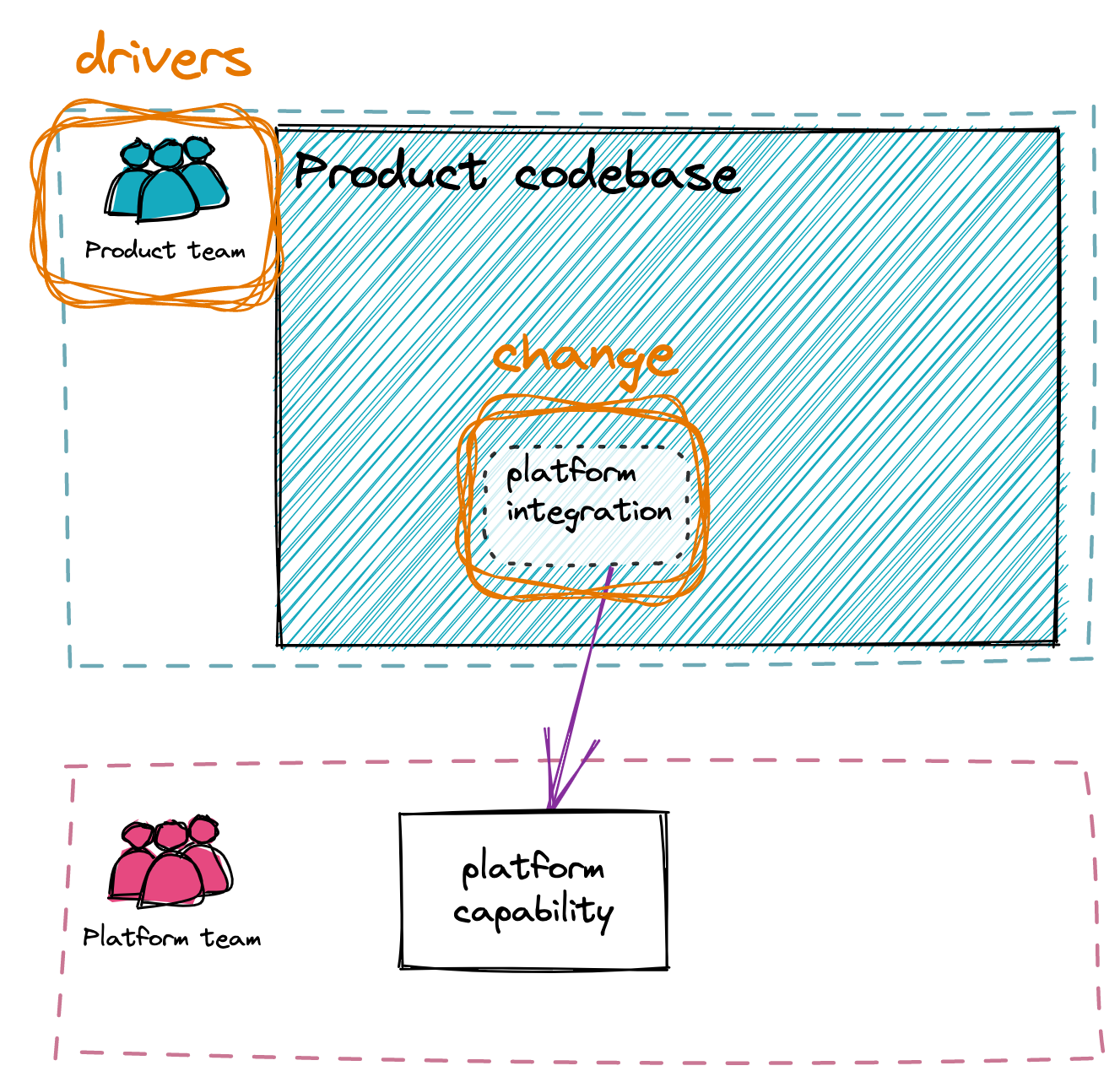
One instance of platform intake could be a product crew
spinning up a brand new provider the usage of a service chassis
that is maintained by way of an infrastructure platform crew. Or a
product crew may well be beginning to use an inside buyer analytics
platform, or beginning to retailer PII the usage of a devoted Delicate Knowledge
Retailer provider. For example from the opposite finish of the device stack,
a product crew beginning to use parts from a shared UI part
library is one of those platform intake paintings.
The important thing distinction between platform intake paintings vs platform
migration paintings is that the product crew is each the motive force of the paintings, and
the landlord of the codebase that wishes converting – the product crew has a broader purpose of its
personal, and they’re leveraging the platform’s options to get there. That is against this
to platform migration the place the platform crew is attempting to power adjustments into different crew’s codebase.
With platform intake With the product crew as each driving force and proprietor, it’s possible you’ll suppose that this platform
intake state of affairs must now not require cross-team collaboration.
On the other hand, as we will be able to see, the product crew can nonetheless want some make stronger
from the platform crew.
Collaboration patterns
A worthy purpose for plenty of platform groups is to construct a completely self-service
platform – one thing like Stripe or Auth0 that’s so well-documented and
simple to make use of that product engineers can use the platform with no need
any direct make stronger or collaboration with the platform crew.
In fact, maximum inside platforms are not rather there,
particularly early on. Product engineers getting began with an
inside platform will regularly run into deficient documentation, obtuse
error messages, and complicated insects. Incessantly those product groups will
throw up their palms and ask the platform crew to pitch in to assist
them get began the usage of the options of an inside platform.
When a platform client is looking the platform proprietor for
hands-on make stronger we’re again to cross-team collaboration, and as soon as
once more other patterns come into play.
Skilled services and products
Now and again a product crew may ask the platform crew to
write the platform intake code for them. This may well be as a result of
the product crew is suffering to determine the right way to use the
platform. Or it might be as a result of this way will require much less
effort from the product crew. Now and again it is only a false impression
the place the product crew does not suppose they are intended to do the paintings
themselves – it will occur when transferring right into a devops fashion the place
product groups are self-servicing their infra wishes, for instance.
On this state of affairs the platform crew type of turns into slightly
skilled services and products staff throughout the engineering org, integrating
their product into their buyer’s techniques on their behalf.
This skilled services and products fashion makes use of a mix of
collaboration patterns. At the start, a product crew will usually File a Ticket
soliciting for the platform crew’s services and products. This is identical
trend we checked out previous for Platform Migration paintings, however
inverted – on this scenario it is the product crew submitting a price tag
w. the platform crew, asking for his or her assist. The platform crew can
then in reality carry out the paintings the usage of both the Trusted Outsider or
Internal Open Source patterns.
A commonplace instance of this collaboration fashion is when a product
crew wishes some infrastructure adjustments. They wish to spin up a brand new
provider, sign up a brand new exterior endpoint with an API gateway, or
replace some configuration values, in order that they dossier a price tag with a
platform crew asking them to make the right adjustments.
This trend is frequently noticed within the infra area, as it
perpetuates an present addiction – prior to self-service infra, submitting
a price tag would had been the usual mechanism for a product crew
to get an infrastructure exchange made.
White-glove onboarding
For a platform that is in its early phases and missing in excellent
documentation, a platform crew may choose to onboarding new product
groups the usage of a “white glove” way, running side-by-side with
those early adopters to get them began. It will assist kickstart
the adoption of a brand new platform by way of making it much less hard for the product
groups who cross first. It may additionally give a platform crew actually precious
insights into how their first shoppers in reality use the platform’s
options.
This white-glove fashion is usually accomplished the usage of the Tour of Duty
collaboration trend – a number of platform engineers will
spend a while embedded into the eating crew, doing the
required platform integration paintings from inside of that crew.
Arms-on does not scale
We will be able to see that the extent of hands-on make stronger {that a} platform
crew wishes to offer to shoppers can range so much relying
on how mature a platform’s Developer Revel in is – how effectively it is
documented, how simple it’s to combine and perform towards.
Within the early days of a platform, it is smart for platform
intake to require a large number of power from the platform crew
itself. The developer revel in continues to be slightly rocky, platform
features are most likely nonetheless being constructed out, and eating groups
are most likely slightly skeptical to speculate their very own time as guinea
pigs. What is extra, running side-by-side with product groups is a
wonderful means for a platform crew to grasp their shoppers and what
they want!
On the other hand hands-on make stronger does not scale, and if extensive platform
adoption is the purpose then a platform crew should spend money on the
developer revel in in their platform to steer clear of drowning in
implementation paintings.
It is usually vital to obviously be in contact to platform customers what
make stronger fashion they must be expecting. A product crew that has won
white-glove make stronger within the early days of platform adoption will glance
ahead to taking part in that have once more someday except
knowledgeable another way!
Platform Evolution
Let’s transfer on to have a look at our ultimate platform collaboration segment: platform
evolution. That is when a crew the usage of a platform wishes adjustments within the platform itself, to fill an opening within the platform’s
features.
As an example, a crew the usage of a UI part library
may desire a new form of <Button> part to be added, or for
the present <Button> part to be prolonged with further
configuration choices. Or a crew the usage of a service chassis may need that chassis to emit extra
detailed observability knowledge, or most likely make stronger a brand new
serialization layout.

We will be able to see that during Platform Evolution segment the crew’s respective
roles are the other of Platform Migration – now it is the product
crew that is using the paintings, however the adjustments want to happen within the
platform crew’s codebase.
Let’s take a look at which cross-team
collaboration patterns make sense on this context.
Report a price tag
The product crew may File a Ticket with the platform crew,
asking them to make the specified adjustments to their platform. This
has a tendency to be an excessively irritating way. Incessantly a product crew handiest
realizes that the platform is lacking one thing these days that
they want it, and the turnaround time for buying the platform crew
to prioritize and carry out the paintings can also be means too lengthy – platform
groups are usually overloaded with inbound requests. This results in
the platform crew turning into a bottleneck and blocking off the product
supply crew’s development.
Transfer engineers to the paintings
With adequate caution, groups can plan to fill an opening in
platform features by way of quickly re-assigning engineers to paintings
at the required platform improvements. Product engineers may do a
Tour of Duty
at the platform crew, or then again a platform engineer may
sign up for the product crew for some time as an Embedded Expert.
Shifting engineers between groups will inevitably result in a
momentary have an effect on on productiveness, however having an embedded engineer
can building up potency in the end by way of decreasing the volume of
cross-team communique that is wanted between the product and the
platform groups. The embedded engineer acts as an envoy,
smoothing the communique pathways and decreasing the video games of
phone.
This equation of fastened in advance prices and ongoing advantages way
that re-assigning engineers is an possibility absolute best reserved for higher
platform enhancements – transferring an engineer to every other crew for a
couple of weeks could be extra disruptive than useful.
These kinds of brief assignments additionally require a rather
mature control construction to steer clear of embedded engineers feeling
remoted. With an Embedded Knowledgeable – a platform engineer re-assigned
to a product crew – there’s additionally a chance that they transform a normal
“additional hand” who’s simply doing platform intake paintings, slightly than
actively running at the enhancements to the platform that the
product crew want.
Paintings at the platform from afar
If a platform crew has embraced an Internal Open Source way then a
product crew has the choice of immediately enforcing the specified platform adjustments
themselves. The platform crew’s position could be most commonly consultative,
offering design suggestions and reviewing the product crew’s
PRs. After a couple of PRs, a product engineer may even achieve sufficient
accept as true with from the platform crew to be granted the dedicate bit and transform
a Trusted Outsider.
Many platform groups aspire to get to this case – would it
be nice in case your shoppers had been empowered to put in force their very own
enhancements, and prevent from having to do the paintings! On the other hand, the
fact of inside open-source is very similar to open-source typically
– it takes a shocking quantity of funding to make stronger exterior
contributions, and the huge majority of shoppers do not transform
significant participants.
Platform groups must watch out not to open up their codebase to
exterior contributions with out making some considerate investments to
make stronger the ones contributions. There can also be deep frustration all
round if a platform crew proudly proclaim in an all-hands that
their codebase is a shared useful resource, however then in finding themselves
again and again telling participants from different groups “no, no, now not like
THAT!”.
Conclusion
Having regarded as Platform Migration, Intake, and Evolution, it is transparent that there is a wealthy selection in how
groups collaborate round a platform.
It is usually obvious that there is not one proper type of collaboration. One of the simplest ways to paintings in combination relies now not simply on
what segment of platform adoption a crew is in, but in addition at the adulthood of the interfaces between groups and between techniques.
Anticipating so as to combine a brand new inside platform in the similar hands-off, as-a-service mode that you would use with a
mature exterior provider is a recipe for crisis. Likewise, anticipating so as to simply make adjustments to a product supply
crew’s codebase when they have got by no means approved exterior contributions prior to isn’t a cheap assumption to make.
be collaborative, however just for a bit of
In Workforce Topologies, they indicate that one of the simplest ways to design excellent limitations between two groups is to first of all paintings in combination
in a centered, very collaborative mode – call to mind patterns like Embedded Expert and
Tour of Duty. This era can be utilized to discover the place the most productive limitations
and interfaces to create between techniques, and between groups (Conway’s Regulation tells us that those two are inextricably entwined).
On the other hand, the authors of Workforce Topologies additionally warn that you must now not keep on this collaborative mode for too lengthy. A platform
crew must be running laborious to outline their interfaces, having a look to transport temporarily to an “as-a-service” mode, the usage of patterns like
File a Ticket and Internal Open Source. As we mentioned within the Platform Intake segment,
the extra collaborative interplay fashions merely may not scale so far as the platform crew is worried. Moreover, collaborative modes
impose a miles higher cognitive load at the eating groups – transferring to extra hands-off interplay types permits product supply groups
to spend extra in their time inquisitive about their very own results. If truth be told, Workforce Topologies considers this relief of cognitive load as
the defining function of a platform crew – a framing which I very a lot consider.
Navigating this shift from extremely collaborative to as-a-service is, personally, one of the crucial largest
demanding situations {that a} younger platform crew faces. Your shoppers transform pleased with the high-touch revel in. Construction nice documentation is difficult.
Announcing no is difficult.
Platform groups working in a collaborative mode must be holding a climate eye for scaling demanding situations. As the desire for a shift
against a extra scalable, hands-off way seems at the horizon the platform crew must start signaling this shift to their shoppers.
An early caution as to how the interplay fashion will exchange – and why – provides product groups a possibility to organize and to start out
transferring their psychological fashion of the platform against one thing that is extra self-sufficient.
The transition can also be painful, however vacillating makes it worse. A product supply crew will recognize obviously
communicated laws of engagement round how their platform suppliers will make stronger them. Moreover, disposing of the crutch of hands-on
collaboration supplies a robust motivation to give a boost to self-service interfaces, documentation, and so forth. Conway’s Regulation is in impact right here –
redefining how groups combine will put force on how the crew’s techniques combine.
A platform crew succeeds at the again of collaboration with different groups, and that collaboration can take many bureaucracy. Selecting the proper
shape comes to bearing in mind the kind of platform paintings the opposite crew is doing, and being sensible concerning the present state of each groups
and their techniques. Getting this proper will permit the platform crew to develop adoption in their platform, however as that adoption grows the
crew should even be intentional in transferring to collaboration modes which might be much less hands-on, extra scalable, and decrease cognitive load for the
shoppers of that platform.

